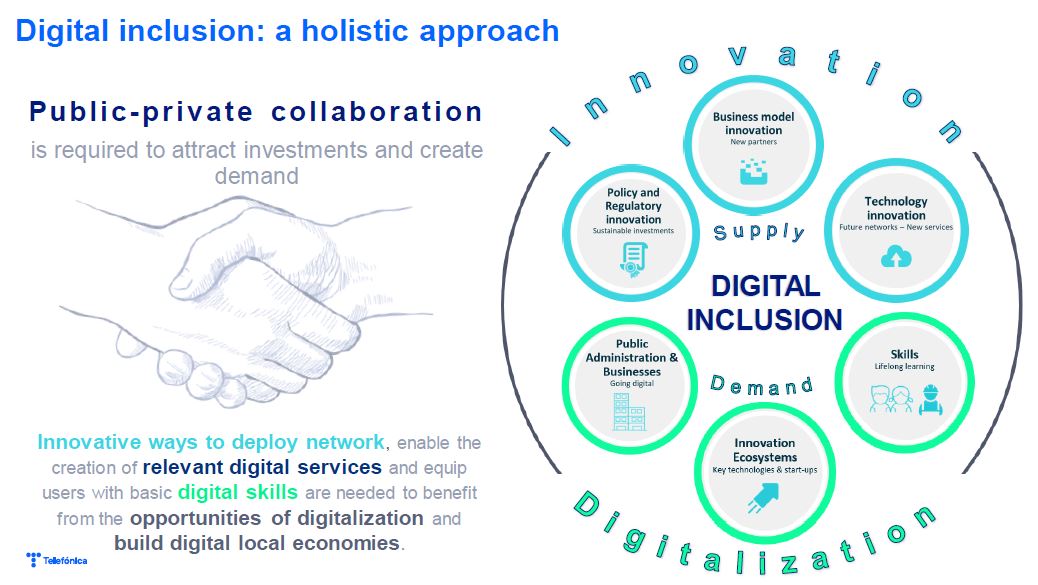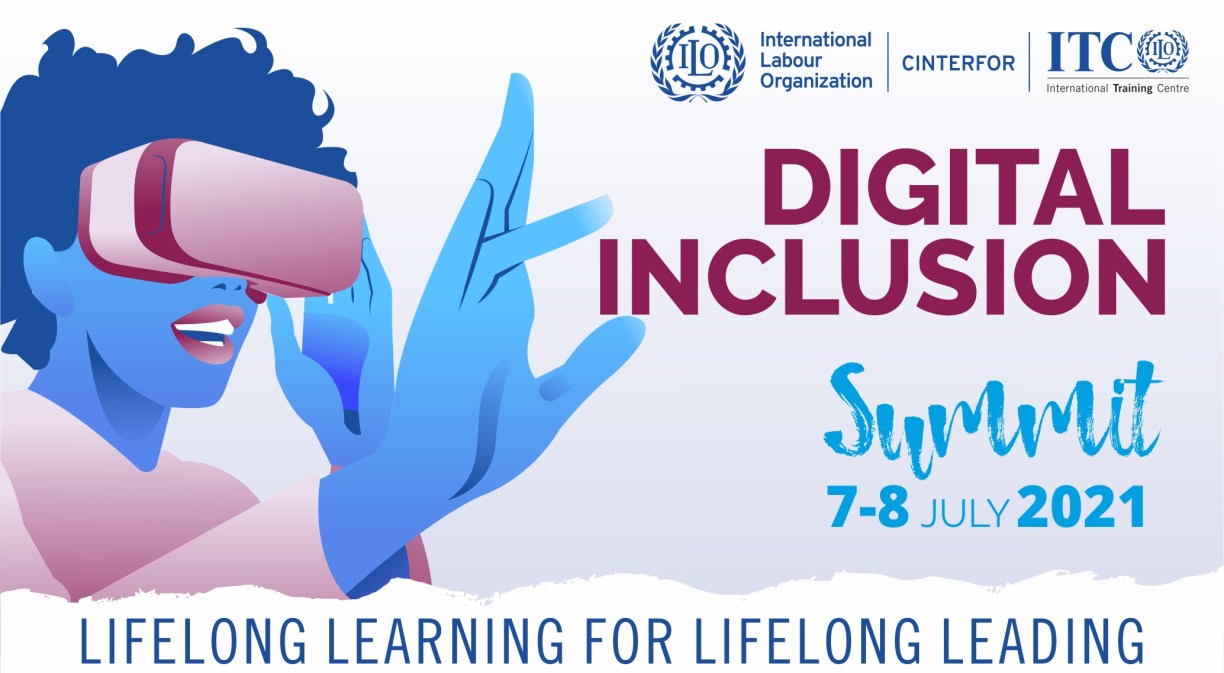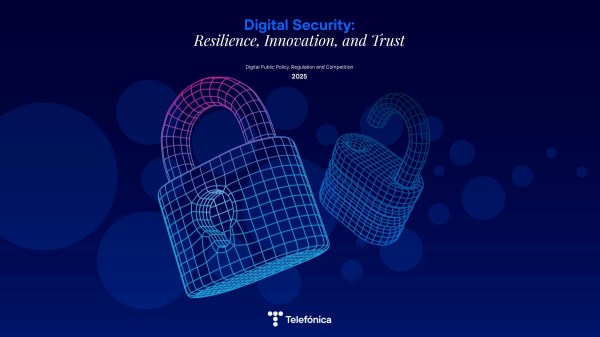Digital inclusion is a hotly debated item on public and political agendas around the world. In all corners of the globe, we know that there can be no economic and social recovery without adequately addressing the inequalities associated with digital transformation. This is true for developing countries, but also for developed countries, where tailored recipes and public-private cooperation are crucial to create opportunities and support local digital economies.
This was the main topic of the “Digital Inclusion Summit” event, organised by the International Training Centre of the International Labour Organization. Christoph Steck, Director of Public Policy and Internet at Telefónica, participated in the session dedicated to accessibility to discuss the regulatory and social policies needed to achieve full digital inclusion. Specifically, he referred to the virtuous circle formed by two specific areas: the supply and demand side of connectivity and digital services.
On the supply side, ubiquitous connectivity is a decisive factor in bridging economic, social and territorial divides. To connect everyone, one of the main concepts to focus on is innovation, specifically in three areas: technology, business model and regulation.
Technological innovation looks to the future with advances such as high-capacity networks, fibre and 5G. For example, for underserved and remote rural areas, new technologies are already available to reduce the cost of networks, such as Open RAN. Open RAN is a relevant technology not only for the development of 5G, but also for lowering the cost of 4G deployments in rural areas. Beyond the technical aspects, this technology brings innovation and competition among providers, reinforcing their diversity and further securing the supply chain.
This technology must be accompanied by new business models based on increased collaboration between different actors (e.g. governments, operators, internet companies, players from other sectors). Partnerships and new forms of cooperation can improve cost-effectiveness and reduce costs to facilitate more efficient network deployment. A successful example of a collaborative model for attracting new investment is Internet para Todos, which is based on the deployment of a neutral wholesale mobile network in rural areas. This project brings together the expertise of a telecommunications company, such as Telefónica, with other partners from different sectors, such as Facebook, the IDB and the CAF.
This triad is completed by the need for innovation in policy and regulatory frameworks. Regulation should remove all obstacles to more efficient investments in remote and rural areas, while public policies must support the viability of private investments. In this respect, it is essential that governments join this effort to improve connectivity goals. But how? By allocating public funds for network deployment in remote (unprofitable) areas or by modernising frameworks to align competition laws and connectivity objectives, by providing fiscal incentives and also by easing administrative and permitting burdens.

On the demand side, more incentives for the use and adoption of digital technologies should be targeted at end-users, but also at SMEs, start-ups and public administrations.
First of all, we need different ways of learning to be able to fully participate in the digital world. If connectivity is the first requirement to access the digital world, digital literacy is perhaps the second most relevant factor for any divide. Connectivity and the introduction of new technologies in education are adding new learning opportunities, universalising, and democratising access to quality knowledge, and contributing to equal opportunities. They are therefore key to mitigating inequalities, building strong digital economies and improving access to information. Companies have a responsibility to encourage and help their workers to adapt and update their skills. At Telefónica, we have developed initiatives in this direction, such as Conecta Empleo, the online education platform MiriadaX or the 42 model based on peer-to-peer challenge learning, free and open 22 hours a day, seven days a week.
Secondly, all businesses must go digital, regardless of their size, to make the most of what connectivity and emerging technologies can bring. SMEs, because of their importance in the economic fabric, and startups demand developments such as cloud services, cybersecurity solutions and the training they need for a successful digital journey. But public administrations must also follow this path of digitisation. We cannot have 21st century economies without modern, efficient and digital public administrations. Big Data, AI, Edge Computing and Blockchain are just a few technologies that would especially benefit the most efficient public administrations (e.g. Health, Education and Justice) through real-time insights, transparency and the use of data.
Last but not least, accessibility for people with difficulties is extremely relevant to achieve the goal of leaving no one behind. Telefónica has a long history of ensuring that people with special needs can access the services we offer. If more than two decades ago we were committed to fixed terminals adapted for the elderly and people with hearing and visual difficulties, now the focus is on digital services and technological devices, which have to be designed with accessibility criteria in mind. This premise inspires initiatives such as Movistar+ 5S to facilitate access to the contents of the Movistar+ television platform under a triple accessibility system, the Mapcesible application or accessible terminals for ONCE lottery ticket sellers.
For all these reasons, innovation and digitalization are great tools for increasing the well-being of society and reducing existing divides. The responsibility lies in our hands to achieve this. We need an unprecedented and coordinated effort between the public and private sectors, along with innovative ways to connect people, and to promote the adoption of new technologies to leave no one behind.







